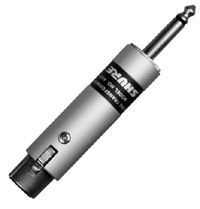Tips & Resources for Musicians

Taylor Expression System Pre-Amp Fix
I love my Taylor 314ce guitar and the Expression System pickups, but the Expression System pre-amp is a problem. Taylor opted to buck standard convention and uses a balanced pre-amp output instead of the standard unbalanced output. When plugged into the standard unbalanced instrument cable, the output of the pre-amp is best described as anemic. This only applies to the first version of the Expression System. The new Expression System II uses a standard line level output and does not have the same low level output problem. The Expression System I, as it is called now, is still used on 300 an 400 series guitars. I play a lot of open mic events where you are expected to plug-in to the instrument cable provided by the house and play. There isn't time to re-wire the stage for "special" guitars. If the house PA system lacks sufficient headroom to adjust for the weak output of my Taylor guitar, then it is impossible to get a good mix in either the house or the monitors. My initial response to this problem was to add a DIMax+ pre-amp to my peddle board. This worked great until I started playing a lot of acoustic events where I didn't use a peddle board. Although the DIMax+ can be run from a battery, it doesn't fit in my guitar case. I started looking for a better alternative. I eventually discovered a Shure A85F impedance matching transformer that converts a balanced XLR connection into a 1/4-inch unbalanced connection. Shure claims this transformer will provide 24dB of gain. Since it is a passive device, it's not really gain. What this means is that the Shure transformer is correcting 24dB of LOSS caused by connecting an unbalanced instrument cable to my Taylor ES pre-amp! No wonder the output is so low. There's still one more problem to address. In many cases, you can't just replace the house instrument cable with a special rig. The other end of the instrument cable is usually buried or inaccessible, and it takes time, which aggravates the host and the audience. My solution to this problem is to add a coupler that connects two 1/4-inch male connectors together. I used a Planet Waves stereo coupler, but a mono coupler would work just as well. Now when I take the stage, I just connect my rig to the house instrument cable and play. The figures below depict my solution to the Taylor ES pre-amp problem. You will need a balanced TRS to XLR cable to get the signal out of your guitar. The XLR end of the cable plugs into the matching transformer, and the unbalanced end of the transformer connects to the coupler. The whole rig fits easily within my guitar case, so I have nothing extra to carry to an event.
Balanced Instrument Cable TRS male-XLR male

1/4 Inch TS Female to Female Mono/Stereo Cable Coupler
 Standard house instrument cable (unbalanced)
Standard house instrument cable (unbalanced)








